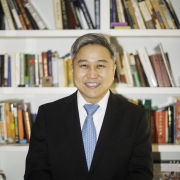Penn-UCSB Team Clarifies Purpose of Iridescent Structures in Giant Clams
A team of researchers from the University of Pennsylvania and the University of California, Santa Barbara, has shown how giant clams use iridescent structures, the purpose of which was unknown before. The structures enable symbiotic algae on clam shells to absorb the ideal amount of light for them to thrive and serve as efficient food for the clam. Their findings could have implications for alternative energy research.
At Penn, the study was led by Alison Sweeney, Assistant Professor of Physics and Astronomy. It was published in the Journal of the Royal Society Interface.
Read the full story here.





